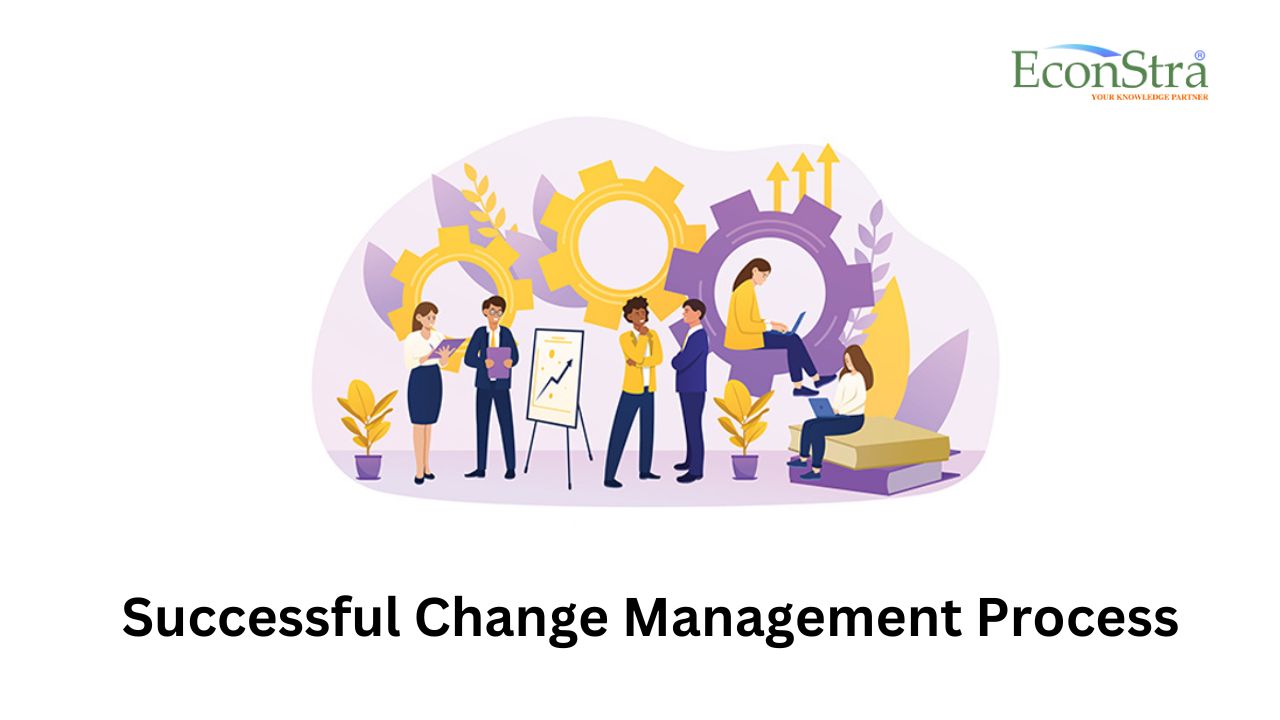by Soumyajit Admin
Share

Today, in the dynamic landscape of modern business, where competition is fierce and margins for error slim, efficiency is not just desirable—it is imperative. As businesses strive to stay ahead, they are increasingly recognizing the pivotal role workflow efficiency plays in driving growth and success. From streamlining operations to optimizing resource allocation, every aspect of workflow management contributes to overall productivity and profitability. In this digital age, where time is of the essence and agility is key, understanding how workflow efficiency impacts business growth is not just a luxury but a necessity.
Let’s delve into the intricate relationship between workflow efficiency and business expansion, exploring how organizations can harness the power of streamlined processes to unlock their full potential.
So, let’s get started!
The Foundation of Business Growth
At the heart of every successful business lies a well-oiled machine of processes and operations. Workflow efficiency forms the foundation upon which sustainable growth is built. When tasks are executed seamlessly, resources are allocated judiciously, and communication flows effortlessly, organizations can operate at peak performance levels. Whether it’s manufacturing, service delivery, or administrative functions, optimizing workflows ensures that every component of the business operates harmoniously towards common objectives. In essence, efficient workflows lay the groundwork for maximizing productivity, minimizing costs, and capitalizing on opportunities for expansion.
What is Workflow Efficiency?
Workflow efficiency can be understood as the ability of an organization to streamline its operations, eliminate redundancies, and utilize resources effectively to achieve its objectives. Essentially, it involves optimizing the sequence of tasks, activities, and processes within a workflow to enhance productivity and minimize wastage of time, effort, and resources.
Efficient workflows enable organizations to deliver products or services promptly, maintain high-quality standards, and adapt to changing market conditions swiftly. Whether it’s a manufacturing plant, a service-oriented business, or a digital agency, every organization relies on efficient workflows to remain competitive and meet customer expectations.
Also read: What Are The Impacts Of Improper Workflow In Business?
Key Components of Workflow Efficiency
-
Process Automation:
Process automation involves the use of technology to automate repetitive tasks, reducing manual intervention and human error. By leveraging tools like workflow management software and robotic process automation (RPA), organizations can streamline routine processes such as data entry, document approval, and inventory management. Automation not only accelerates task completion but also frees up employees to focus on higher-value activities, driving overall productivity and efficiency.
Also read: How Business Automation Helps In Error Minimization
-
Clear Communication Channels:
Effective communication is essential for smooth workflow operations. Clear and transparent communication channels facilitate the seamless exchange of information, instructions, and feedback among team members and departments. Whether it’s through emails, project management platforms, or regular meetings, establishing open lines of communication ensures that everyone is on the same page regarding tasks, deadlines, and project updates. Clear communication minimizes misunderstandings, prevents delays, and fosters collaboration, thereby enhancing workflow efficiency.
-
Task Prioritization and Optimization:
Task prioritization involves identifying and ranking tasks based on their importance, urgency, and impact on organizational goals. By prioritizing tasks effectively, organizations can allocate resources wisely and focus their efforts on high-priority activities that contribute the most value. Additionally, task optimization entails optimizing the sequence and workflow of tasks to minimize idle time and maximize productivity. Techniques such as time-blocking, batch processing, and Kanban boards can help streamline task management and improve overall workflow efficiency.
-
Resource Allocation:
Efficient resource allocation involves allocating human, financial, and material resources in a manner that maximizes their utilization and effectiveness. This requires careful planning, budgeting, and forecasting to ensure that resources are allocated according to business priorities and project requirements. By optimizing resource allocation, organizations can avoid overutilization or underutilization of resources, minimize costs, and enhance operational efficiency.
-
Streamlined Decision-Making Processes:
Decision-making is a fundamental aspect of workflow management, impacting the speed and efficiency of operations. Streamlined decision-making processes involve defining clear decision-making criteria, empowering employees to make autonomous decisions within their authority limits, and minimizing bureaucratic delays. By decentralizing decision-making and fostering a culture of agility and adaptability, organizations can respond quickly to challenges and opportunities, driving continuous improvement and innovation.
Also read: How To Identify Automation Opportunities In Business For Success?
How Workflow Efficiency Impacts Business Growth?
Enhancing Productivity and Performance
One of the most significant impacts of workflow efficiency on business growth is its ability to enhance productivity and performance across the board. By eliminating bottlenecks, redundant tasks, and unnecessary delays, organizations can achieve more in less time, thereby increasing output and meeting customer demands more effectively. Efficient workflows empower employees to focus their time and energy on value-adding activities rather than getting bogged down by mundane tasks or bureaucratic red tape. This not only boosts morale and job satisfaction but also fosters a culture of innovation and continuous improvement.
Moreover, streamlined processes enable better resource allocation, ensuring that manpower, materials, and capital are utilized optimally. Whether it’s through automation, standardized procedures, or agile project management methodologies, businesses can allocate resources where they are most needed, thereby maximizing efficiency and driving growth. In a competitive marketplace where every advantage counts, the ability to do more with less can be a game-changer for businesses looking to gain a competitive edge and expand their market presence.
Agility in Response to Market Dynamics
In today’s fast-paced business environment, adaptability is key to survival. Market dynamics can shift rapidly, presenting both opportunities and challenges for businesses. Those with efficient workflows are better equipped to respond to these changes with agility and resilience. Whether it’s scaling up operations to meet increased demand, pivoting in response to shifting consumer preferences, or capitalizing on emerging trends, agile organizations can navigate uncertainties more effectively, positioning themselves for sustained growth.
Efficient workflows facilitate real-time monitoring and analysis, enabling businesses to identify trends, anticipate market shifts, and make informed decisions swiftly. This proactive approach not only mitigates risks but also allows organizations to capitalize on emerging opportunities before their competitors. By fostering a culture of adaptability and innovation, businesses can stay ahead of the curve and drive continuous growth in a rapidly evolving marketplace.
Building Customer Trust and Loyalty
In an era where customer experience reigns supreme, businesses must prioritize efficiency to deliver on their promises and exceed customer expectations. Efficient workflows enable organizations to provide seamless, frictionless experiences that delight customers and build trust and loyalty over time. Whether it’s fast response times, accurate order fulfillment, or personalized service, customers value businesses that prioritize efficiency and reliability.
By consistently delivering high-quality products and services in a timely manner, businesses can foster long-term relationships with their customers, leading to repeat business, positive word-of-mouth referrals, and brand advocacy. Moreover, efficient workflows enable organizations to gather valuable feedback and insights from customers, allowing them to continuously improve and innovate based on customer needs and preferences. In a competitive marketplace where customer retention is as important as customer acquisition, building trust and loyalty through efficient workflows can be a powerful driver of sustainable growth.
Overcoming Challenges in Implementing Workflow Efficiency Measures
Implementing workflow efficiency measures can be a transformative process for organizations, but it’s not without its challenges. Overcoming these hurdles is crucial to realizing the full potential of efficiency initiatives. Here are the key challenges and strategies for addressing them:
A. Resistance to Change:
Resistance to change is a common barrier when implementing workflow efficiency measures. Employees may be accustomed to existing processes and resistant to adopting new tools or methodologies. To overcome this challenge, organizations must prioritize change management efforts. This involves transparent communication about the reasons for change, engaging employees in the decision-making process, and providing training and support to help them adapt to new workflows. Additionally, leaders should foster a culture of innovation and continuous improvement, where employees feel empowered to suggest and embrace changes that enhance efficiency.
B. Integration Issues with Existing Systems:
Integration issues with existing systems can arise when implementing new workflow efficiency measures, particularly if the organization relies on disparate or legacy systems. Incompatibility between systems may hinder data sharing and workflow automation, leading to inefficiencies. To address this challenge, organizations should conduct thorough assessments of their existing systems and workflows to identify integration requirements. Investing in incompatible software solutions or middleware platforms can facilitate seamless integration and data exchange between systems. Moreover, collaboration with IT professionals and external vendors may provide expertise in overcoming integration challenges and ensuring smooth implementation.
Also, check: Tips for Business Process Automation
C. Ensuring Data Security and Privacy Compliance:
Data security and privacy compliance are paramount concerns when implementing workflow efficiency measures, especially in industries handling sensitive information or subject to regulatory requirements (e.g., healthcare, finance). The adoption of new technologies and automation tools may introduce vulnerabilities or increase the risk of data breaches if not implemented securely. To mitigate these risks, organizations must prioritize data security measures throughout the implementation process. This includes implementing robust encryption protocols, access controls, and user authentication mechanisms to safeguard sensitive data. Additionally, organizations should conduct regular audits and assessments to ensure compliance with relevant data protection regulations (e.g., GDPR, HIPAA) and address any potential gaps or vulnerabilities proactively.
NOTE:
In today’s rapidly evolving business landscape, the connection between workflow efficiency and sustained growth is undeniable. At Econstra, where we specialize in business consultancy and cutting-edge process automation systems, we understand the critical role that streamlined workflows play in driving business success. Efficient workflows not only enhance productivity but also optimize resource allocation, minimize operational bottlenecks, and foster innovation. By implementing tailored solutions for process automation, businesses can eliminate tedious manual tasks, reduce errors, and accelerate decision-making processes. This not only frees up valuable time and resources but also empowers teams to focus on high-value initiatives that drive revenue and foster long-term growth. In essence, the efficiency of workflows directly correlates with a company’s ability to adapt, innovate, and ultimately thrive in today’s competitive marketplace.
Conclusion: How Workflow Efficiency Impacts Business Growth
In conclusion, the impact of workflow efficiency on business growth cannot be overstated. From enhancing productivity and performance to fostering agility and innovation, efficient workflows form the cornerstone of organizational success in today’s competitive landscape. By prioritizing efficiency, businesses can unlock their full potential, driving growth, and staying ahead of the curve.
As we look to the future, businesses must continue to invest in optimizing their workflows, leveraging technology, and fostering a culture of continuous improvement to remain agile, adaptive, and resilient in the face of evolving challenges and opportunities.
How workflow efficiency impacts business growth is not just a question for today but a guiding principle for tomorrow’s success.
STAY IN THE LOOP
Subscribe to our free newsletter.
In today’s fast-paced, dynamic business environment, the success of any organization hinges on the performance of its teams. High-performing teams are not just a product of chance; they are meticulously crafted through effective leadership and strategic talent management. Today, here, in this blog post, we delve into the intricacies of developing high-performing teams, exploring the […]
In the realm of teamwork, effective communication acts as the glue that holds everything together. Whether you are collaborating on a project, managing a team, or striving for a common goal, clear and open communication is paramount to success. However, despite its significance, communication gaps often plague teams, leading to misunderstandings, delays, and frustration. Here, […]
In today’s fast-paced business environment, change is not just inevitable; it’s essential for growth and survival. Whether it is adapting to new technologies, responding to market shifts, or restructuring internal processes, businesses must be adept at managing change effectively. However, implementing change management strategies can be challenging without a clear roadmap. So, today, here, in […]
Welcome aboard the journey of unlocking the true potential of your business through the art of sales strategy. In a landscape where competition is fierce and markets are ever-evolving, developing a winning sales strategy is not just an option; it’s a necessity for survival and prosperity. Whether you are a budding entrepreneur or a seasoned […]





